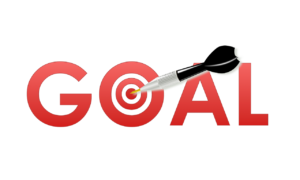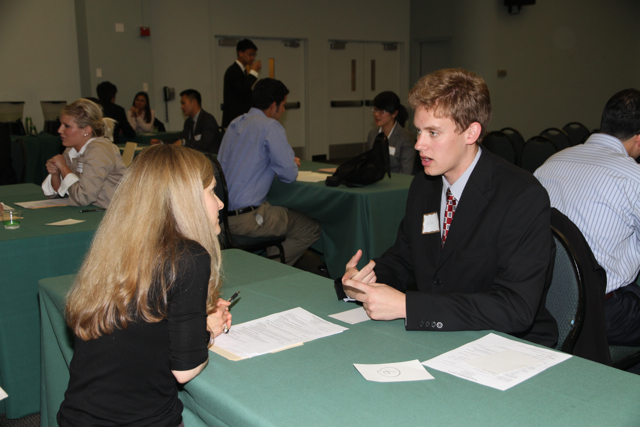
You’ve probably heard this story…
When I was 33, I decided to become rich. And I made that my supreme and overriding goal. There were plenty of other things that I wanted to do – like reading books and playing sports and traveling. But I made them all distant secondary objectives. The lion’s share of my time and mental energy would be devoted to getting rich.
This decision radically changed my life. I went from broke to kinda rich in about 18 months. I became a deca-millionaire about six years later.
Having a single supreme and overriding goal gave me laser-sharp focus and shark-like ambition. Day-to-day business decisions – once complicated – were easy to make. I simply asked myself, “Which is the option that will bring me the most money?” Presto! The choice was clear.
It was also easier to make other kinds of decisions. When a conflict arose between my supreme and overriding goal (like working all day Saturday) and something else (like spending the day with my family), I chose the former.
I didn’t abandon my other duties. I did them as well as I could. But they were always secondary. And it was always noticed. By my family and my friends and, late at night, by the other little selves that still lived inside my heart.
Making “getting rich” my supreme and overriding goal was ruthlessly effective. If I were restricted to a single piece of advice for wannabe millionaires, I’d have to offer that as my suggestion.
But you know – as I did even back then – that there are other ways of being rich. For example:
- You can be rich in your relationships with friends, family, and the community at large.
- You can be rich in health – with a robust immune system, strong muscles, flexible joints, and abundant energy.
- You can be rich mentally – knowledgeable and skillful but also curious, excited, eager to learn more.
If you want a life that includes these riches as well as a lot of money, you are probably going to have to do what I did when I turned 50. I created a rigid monthly, weekly, and daily protocol for spending my time.
Here’s how:
Start by spending about a week thinking about and then writing down every ambition, desire, and obligation you can think of. (My list was dozens of pages long.)
Then sort your list into four categories that correspond to the four ways of being rich:
- rich with money
- rich in relationships
- rich in health
- rich mentally
So, for example, in the “rich mentally” category, I put all of my self-improvement goals. That included writing fiction, learning foreign languages, mastering a martial art, etc.
The next step is to narrow each category down to one broadly defined main goal.
My four main goals looked something like this:
- My Primary Goal – I want to have enough money to support my desired lifestyle on passive income I get from my savings.
- My Social Goal – I want to be a good father and husband, have lots of good friendships, and contribute in some meaningful way to the world.
- My Personal Goal – I want to become a published writer, speak several languages, make a few movies, and become very good in Brazilian Jiu Jitsu.
- My Health Goal – I want to be in optimal health, both mentally and physically, so I can enjoy my other riches.
You may be thinking, “Aren’t goals supposed to be specific? Shouldn’t my financial goal be something like, ‘Have a net worth of $1.2 million in 6.3 years’? Isn’t that what the experts say?”
Yes they do. But I believe they are wrong. Your long-term goals should be broad because you won’t really know what you want until some time has passed. In other words, you will likely change those goals as you gain experience. And that’s a good thing. Because the pleasure you get from having goals is the pleasure of moving toward them, not achieving them. (If you don’t understand this last bit, don’t worry. It’s not important now. You’ll get it in a year or two if you do this seriously.)
Once you’ve established your four broad long-term goals, it’s time to determine your yearly goals. Within each of the four categories, you might want to list two or three or even a dozen. Under Personal Goals, for example, you might say:
- Write a book on fly-fishing.
- Complete a course in beginning Spanish.
- Watch an average of no more than two hours of TV a night.
- Learn to dance the Samba.
As you can see, these yearly goals are more specific than the long-term goals. But they are still fairly broad.
Now you are ready to create monthly goals. Again, they will be more specific. For example, to achieve your yearly goal of writing a book on fly-fishing, you might set your first monthly goal as, “Write the first 30 pages.”
Your weekly and daily goals will be even more specific. Weekly goal: “Write five pages.” Daily goal: “Write one page.”
By setting your goals from broad to specific, you increase the likelihood of success by decreasing the likelihood of failure. (If you fail to write one page of the book on Tuesday, you can write two pages on Wednesday.)
The reason for this approach is that it’s impossible to become wealthy in all four areas of life unless you can see very clearly – on a monthly and weekly basis – exactly how much work you have to do.
What happens to most people that try to achieve this balance is that some tasks tend to crowd out others. And as time passes, they fall so far behind on certain goals that they give up on them entirely.
Will you have time to accomplish all your goals?
I think you will. But you have to start off by being realistic. That means you need to recognize from the outset that of the four types of wealth, becoming financially wealthy will take the most time.
We all want to get rich by working four hours a week. But the reality is that you will probably have to spend the bulk of your time – as much as eight to 10 hours a day – pursuing your financial goal.
The good news is that it doesn’t take nearly as much time to make progress on your three other main goals.
Getting richer socially can be accomplished in just a few hours a week. It really amounts to giving your full attention to the time you spend with family and friends.
Health goals take even less time. It’s mostly about eating and sleeping well. As for physical exercise, you can achieve a high level of success by spending a half-hour a day exercising intensely.
Your personal goals? They will take some quality time. My recommendation is to devote the first hour or two of your day to personal goals… before you start to focus on making money.
If what I’ve said here is at all motivating, I’ve got plenty of books and programs I can recommend. (Including several I’ve authored.) But for now, take a few minutes to think about the following:
- Of the four categories, only your health is not completely under your control. Becoming rich in the other three categories is entirely up to you.
- Getting richer in any category requires purposeful action. Desire is not enough.
- Any bit of enrichment in any category makes you feel better.
- Nobody else cares whether you have become richer in any of these categories. But they will notice if you have. Only you should care. And only you can make it happen.


 I could not walk more than five minutes without having to sit down. Some nights I barely slept because I couldn’t find a position that would lessen the pain.
I could not walk more than five minutes without having to sit down. Some nights I barely slept because I couldn’t find a position that would lessen the pain.
